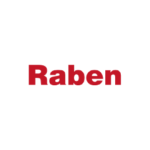Responding to constant changes is an indispensable part of the work of those in charge of production planning. If these changes have little influence on the shape of the entire plan and schedule, they may even be imperceptible. But it gets worse when, for example, due to a machine failure, the production plan and schedule that had been prepared for many hours is no longer valid. Is it possible to remedy this?
Production management in practice
The variables which influence the final shape of the production plan and schedule are many and largely depend on the individual characteristics of the company. Working as a planning specialist, I have more than once encountered a situation in which, after submitting the production schedule for the next two shifts, I received feedback, “You know what, items 2, 3 and 8 on the list I already did an hour ago, because I could speed up a bit, but now I have a failure and I will only be able to start in two hours. Change item 4 to the neighbouring machine if it’s urgent”.
This example perfectly illustrates how high the dynamics of change can be in the production process. In this situation, the events which occurred between the time of collecting information from the production and publication of the ready schedule caused a complete shattering of the sequence of tasks on the machine. The work of the planner was then limited to “putting out the fire” as quickly as possible. Consequently, the resulting plan no longer reflected the real needs derived from the company’s business objectives, and the struggle began to develop a schedule feasible for production.
Production scheduling versus real-time response
Unfortunately, the events leading to similar consequences are many and in the current reality it is impossible to foresee and eliminate all of them. Some companies, for this very reason, decide to introduce 24-hour operation of the production control/planning office. On the one hand, they gain the possibility to constantly react to disturbances occurring during the production process. On the other hand, this results in a significant increase in fixed costs due to increased staffing and the need for night-time working. In the case of frequent problems caused by machine breakdowns, many companies decide to plan less work of the station than its theoretical capacity. This is a situation in which the schedule places only 80% of the load on a particular machine, leaving the remaining 20% to be used in the event of failure of another resource. Therefore, it is possible to flexibly change the place where the product is made and dispatch the customer’s order on time. An obvious negative effect of making such an assumption is the reduction of production capacity, which may also contribute to the reduction of the number of products being manufactured and increased work in progress.
MES and APS system in the production management process
MES class systems are a solution which significantly improves the speed of transmission of information on the production status (and thus, the quality of production plans and schedules). Thanks to them, information on all events is provided immediately, thus giving the chance for a much earlier reaction for decision-makers. The MES system also enables easy and quick publication in case of its change. APS class systems also play a significant role in solving such a problem. They provide an opportunity for a very quick and easy analysis of the effects of events and preparation of subsequent versions of the production schedule plan within a few minutes. A seemingly unobvious but very interesting issue is the combination of the above systems with HRM class systems which support activities related to recording, accounting and planning of employees’ working time. Information about leave on demand of a key production operator is extremely valuable information in the light of urgent shipment of finished products confirmed to the customer. The scheme of proceedings usually looks like this: the HR department informs the master/manager by phone about the absence of an employee, who in turn (having found out that he cannot replace the employee) notifies the production planning department about the inability to implement the plan. The use of the HRM systems and linking the information from them with APS class solutions will allow for immediate transfer of information to the production planning department. The decision will be possible in the department about a new shape of the plan taking into account this eventuality.
Production planning is not just about IT systems
It is worth emphasising that the use of even the best IT solutions alone is not enough. Developing a production plan and schedule that maximally reflects the company’s business objectives requires continuous improvement and organisational preparation throughout the company. Striving for continuous development of the solutions used and improvement of the results achieved should become an indispensable part of everyone’s work. Without this, it will become impossible to use the solutions in the long term. In addition, the confidence of employees in their use will be undermined by strengthening their belief that “the system is malfunctioning”. As a result, repeated attempts at change may be met with much greater resistance during implementation.
In my opinion, the use of IT systems and continuous improvement of processes in the organisation will, to a greater extent, solve the problem of high dynamics of change occurring during the production process and the related negative business consequences. Although situations causing changes cannot be eliminated in 100%, proper preparation will allow for maximum reduction of their adverse impact.
Mateusz Bireta
Product Manager eq system
Have you got any comments or questions? Contact the author of the article via LinkedIn



































